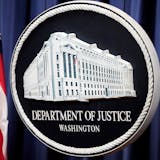Despite mounting criticism about the use of tear gas and other crowd-control agents, law enforcement agencies have resisted disclosing exactly what they're spraying on protesters.
During recent protests in Brooklyn Center over then-officer Kimberly Potter's killing of Daunte Wright, some demonstrators and police exchanged bricks and fireworks for rubber bullets and tear gas. Residents of nearby apartment complexes were trapped in the crossfire.
In response, the Brooklyn Center City Council quickly banned chemical weapons and Mayor Mike Elliott publicly criticized their use. However, in a letter to the Hennepin County sheriff, who assumed the role of incident commander after Brooklyn Center Police Chief Tim Gannon resigned under pressure, Elliott requested the continued support of law enforcement agencies that do use tear gas.
Beyond the immediate, incapacitating effects of tear gas, medical researchers suspect the chemicals may cause long-term health damage, though research is sparse.
Law enforcement agencies say tear gas and other less-lethal techniques are a substitute for a more violent response in a chaotic situation.
"The alternative to chemical munitions would be physical force," including baton strikes, kicks and punches, said Andy Skoogman, spokesman for Hennepin County Sheriff David Hutchinson.
The Hennepin County Sheriff's Office was one of the only agencies that offered details on its use of tear gas.
The Sheriff's Office said its deputies used two hand-thrown CS gas canisters and two 37-mm launched rounds on April 11, the day of Wright's death, before the Brooklyn Center Police Department was fenced.


